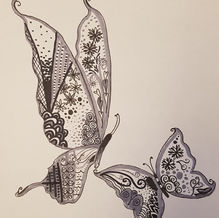Visual Arts Center
The School of Art located in Montreal’s Visual Arts Center is a bilingual, independent, non-profit school that has been involved in the teaching of art for over 65 years. It is a cultural community center committed to the development and exploration of personal creativity, and artistic passions. The Visual Arts Center is committed to introducing children to the joy of creating art though various hands on workshops through which they are taught the fundamentals of drawing, sculpting, and printmaking (Visual Art Center, 2017). In the Winter of 2017 I had the privilege of teaching Contemporary Drawing lessons to a 9 to 12 year old group alongside a cooperating teacher as a part of my practicum placement. The purpose of this class was to help students develop a strong foundation of drawing skills, and techniques, through contemporary and popular culture approaches. They were encouraged to explore their creativity, and personal styles, while working from their imaginations and still life.

Drawing from Observation
Students begin to train their eyes to draw what they see, rather than what they think they see, during observational and blind contour drawing exercises. These exercises are ones that artists practice continually throughout their art making careers to train their minds to genuinely observe the shapes that they are rendering, and to translate them onto paper.

Pattern and Texture
As an introduction to the visual element of pattern students used line to create their very own original rhythmic line pattern compositions. They experimented with different line weights and shapes to create patterns that could be used as 2-dimensional texture, and/or simply for decorative purposes within their artworks.

Printmaking
Students selected lines and patterns from their their previous artworks that they would like to replicate. These were engraved onto a sheet of foam resulting in the template from which they printed.The challenge for this lesson was to incorporate text into their composition because in printmaking text is sketched in reverse onto the template. When the image transfers it shows as the reverse of what is on the template, sort of like a mirrored effect.












